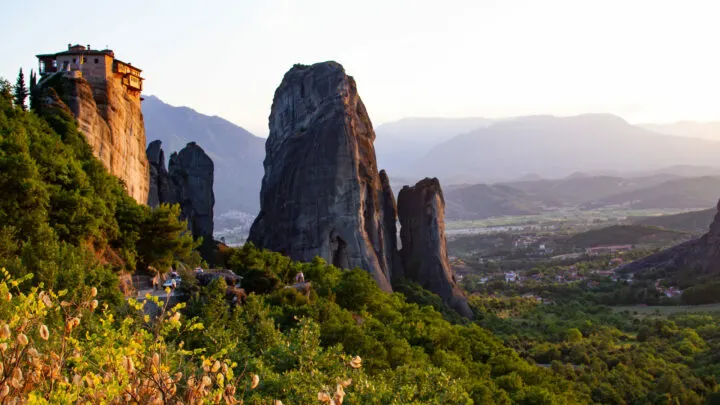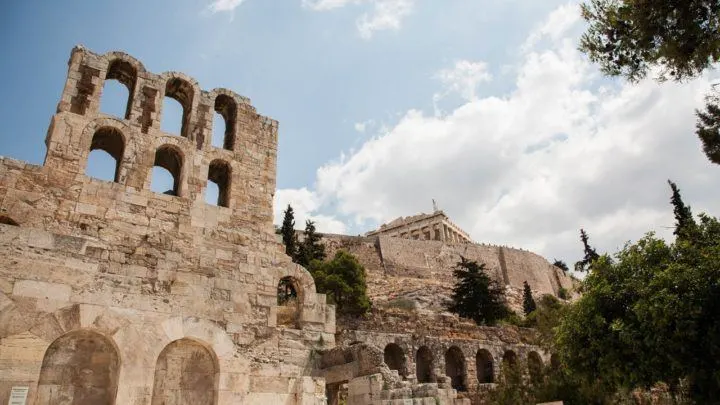Interested in Greek Mythology, especially Helen of Troy? The Archaeological Site of Mycenae holds the key to so many of these stories, and you can climb the citadel that Agamemnon ruled over. No visit to the Peloponnese is complete without a stop at Mycenae.
Continuing on our Peloponnese road trip, we enjoyed so many UNESCO world heritage sites, castles, beaches, and yes…food!
We loved visiting mythical places like King Nestor’s Palace, Mystras, Olympia, and so much more.
In this article:
- What to expect at Mycenae
- Planning Your Visit
- Things to visit nearby
Onto the archaeological site of Mycenae, which is located only a few kilometers from the city of Argos, and still only about 120 kilometers south of Athens, so we really hadn’t made it too far, distance-wise.
The citadel of Mycenae is situated on a steep mountaintop. Its historical significance dates back to the time of the Trojan War and even earlier. The city is mentioned many times in the Iliad and the Odyssey, and was referred to as the “city of gold.” This was reinforced when Schliemann, the famous German archaeologist, excavated a human skull covered with gold.
Legend has it that Perseus, son of the Greek god Zeus and Danae, founded Mycenae when he landed with Pegasus on this very hill and decided it would be the ideal location for his new kingdom castle.

Eventually, Agamemnon became the king of Mycenae, and it was from here that Helen was abducted and taken to Troy. The fortress is mainly linked with the last phase of the Bronze Age in Ancient Greece (1600-1100 BC).

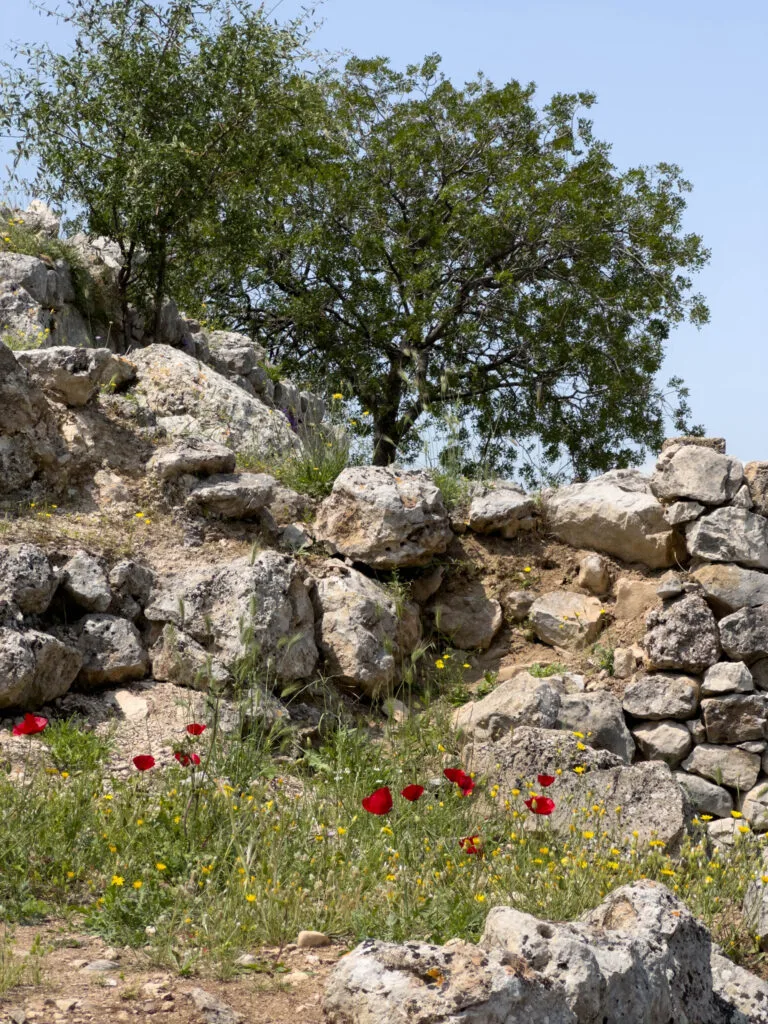
When Perseus left Argos for Tiryns, he instructed the Cyclopes (one-eyed giants) to build the walls of Mycenae with stones no human could lift. It is also worth noting that Helen of Troy came from Mycenae, which played a crucial role in the Trojan War. We’re big fans of the Trojan War, which made this a must-see for us.
From the top of the hill, and in the distance, you can see the ports of Nafplion and Argos and the sea approaches to the ancient city. The place is steeped in mythical history, offering a captivating experience.

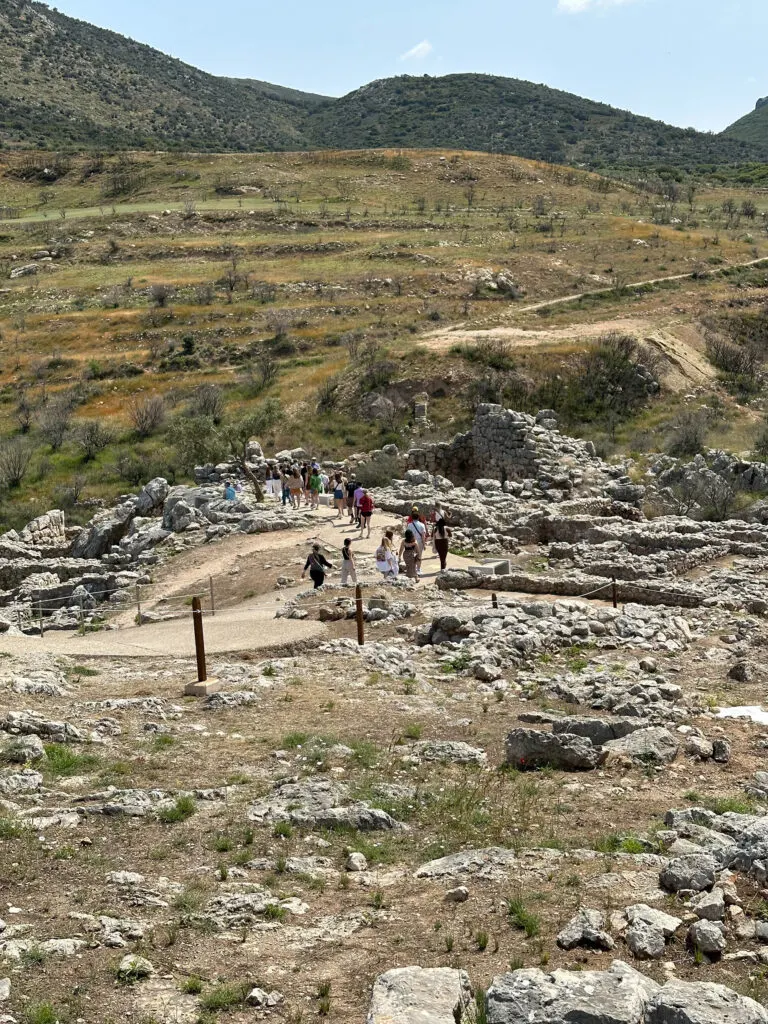
What to Expect at Mycenae
As huge Greek ruin fans, especially those linked with Heinrich Schliemann, who we’ve followed to Troy to see his excavations, Jim and I couldn’t wait to explore the ancient archeological site of Mycenae. Eagerly anticipating it, we recalled our knowledge of Greek mythology and felt pretty well prepared to find some really cool digs.

Unfortunately, we encountered some unexpected delays on our tour and arrived a couple of hours later than planned. This meant we arrived amidst a sea of tourists, which we were consistently dodging for the best views and photos.
The crowds were really in full force at the Mycenaen lion gate, one of the best features of the site. On top of that, lectures were being conducted by tour guides, high school teachers, and college professors, all causing further congestion which was exasperated by many of the students not listening as they should and doing their own thing right in the middle of our path.

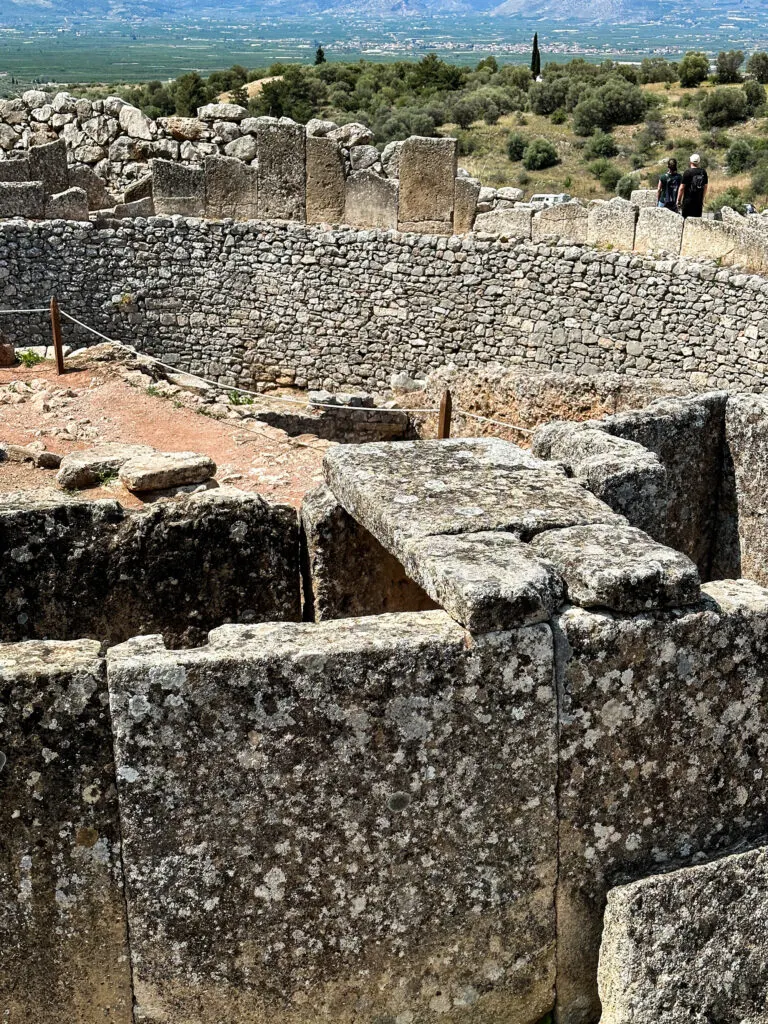
Thankfully, we managed to avoid most of the classes and continued our visit. Making the decision to go up rather than down proved wise, as many people turned back after seeing the throne room, allowing the crowds to disperse.
This granted us the opportunity to explore the other buildings and rooms, as well as some other fascinating features. As we reached the crest of the hill, the scenery opened up, and we were able to enjoy a more serene experience.


Planning Your Visit
During our visit, we noticed a continuous stream of tour buses, even though it was not high season, because we were visiting in May. We asked our guide if this was normal, and he informed us that it was only about half of what they usually see during the summer.
The Archaeological Site of Mycenae is a popular day trip from Athens and also attracts many high school groups, thanks to its rich Greek history and proximity to other notable sites. Although there were many school kids during our visit, we still enjoyed our time there.
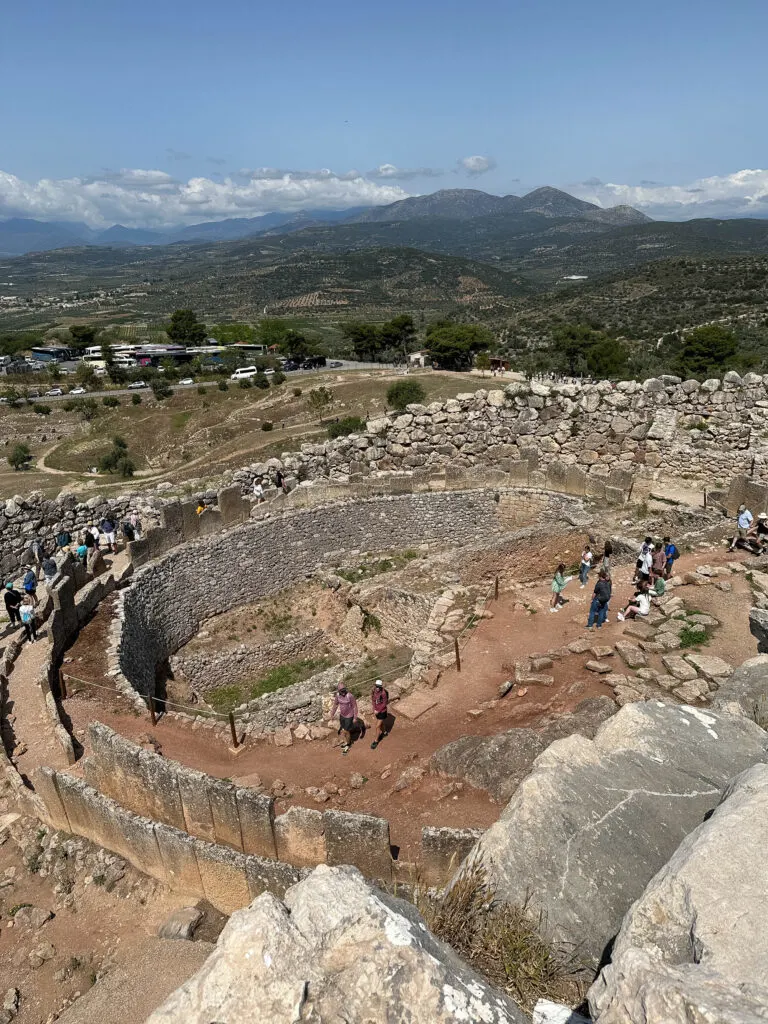
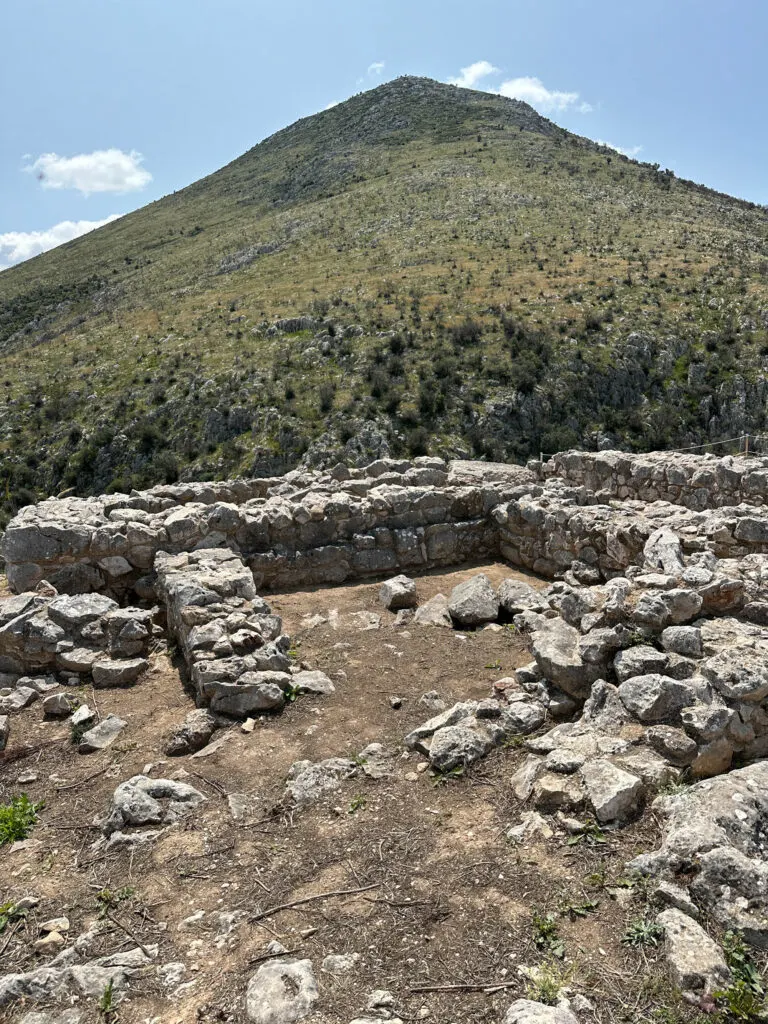
Our guide did an excellent job of discussing the mythology and historical aspects of the site, although he seemed a bit anxious trying to keep track of everyone in the crowded area. Overall, Mycenae is a remarkable site, albeit a jumbled pile of rocks, that offers a glimpse into ancient history.
Note: Even though there is a small museum on-site, most of the most important artifacts found at this site can be seen in the National Archaeological Museum of Athens.
Things to Visit Nearby
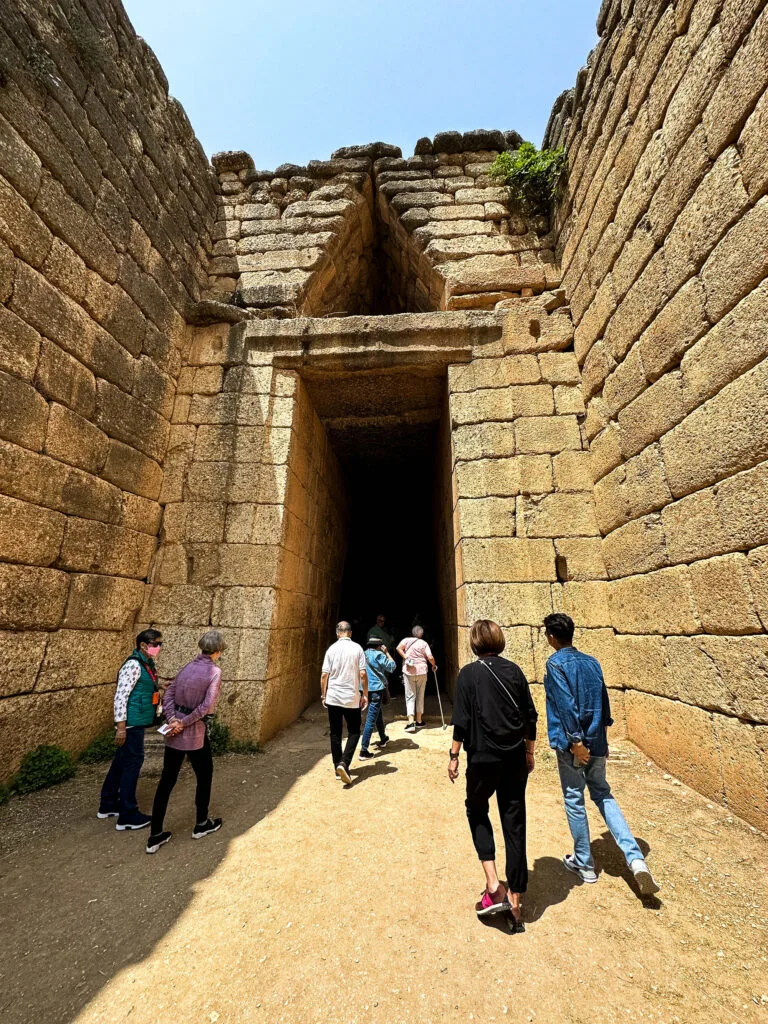

Treasury of Atreus
Outside the grounds, but very close by, there is an ancient circular tomb, or “beehive” tomb, called a Tholos tomb. In this tomb, many artifacts have been discovered, and some were purportedly from a very rich and important person, maybe a king. Of course, they try to link it to the site’s most famous king of all in Mycenae, Agamemnon. This, of course, has not been confirmed.
The top of the tomb offers beautiful views and is adorned with wildflowers. It would have been nice to see a few olive trees and maybe a donkey or two, but unfortunately, they were not present.
Other Greece articles you might enjoy:
Athens to Thessaloniki – A Road Trip
The Acropolis of Athens
Visiting Meteora
Thessaloniki
Diros Caves
Even though the tomb is not technically part of the Mycenae archaeological site, all the school groups stopped there as well, and it was quite busy. It was still a lot of fun to explore and just added a few minutes to the overall visit.
Other things very nearby include many of the stops on our road trip, like Napflio, Palamidi Fortress, Epidaurus, and the Sunken City.
Conclusion
Our trip to Mycenae proved to be an enriching and really fun experience. Despite the crowds, most of which were schoolchildren, the historical and literary stories really brought the old rocks to life for us. I would definitely go again.
Note: We visited Mycenae as part of our TBEX travel conference to the Peloponnese, and we would like to thank Mythical Peloponnese for sponsoring our tour.
Author Bio: Corinne Vail is a travel photographer, food lover, and a perpetual traveler who has been travel writing for over 14 years. For many years she lived overseas in Germany, Japan, Turkey, South Korea, and the Netherlands teaching the children of the US. military. She’s visited over 90 countries, and she’s not stopping anytime soon.

